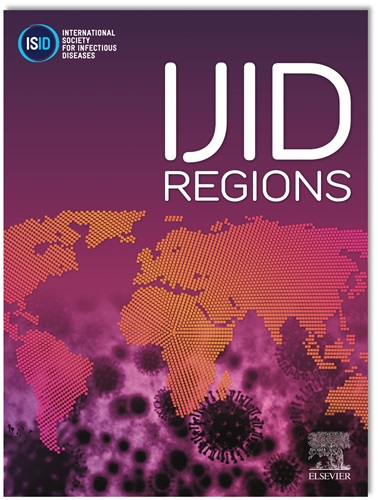先天性寨卡综合征与儿童早期住院之间的关系:一项全国性队列研究
IF 4.8
2区 医学
Q1 INFECTIOUS DISEASES
引用次数: 0
摘要
先天性寨卡综合征(CZS)与多种异常有关。然而,有和没有cz的儿童在住院模式上的差异尚未被调查。方法比较cz综合征患儿与非cz综合征患儿的所有疾病和特定疾病的住院率、住院原因的比例和总住院时间(LOS)。校正发病率比(aIRR)和aLOS采用负二项回归估计。结果与无cz组相比,cz组新生儿期全因住院aIRR为3.77 (95%CI: 3.47 ~ 4.06), 2 ~ 4岁时为7.76 (95%CI:6.91 ~ 8.61)。在具体的入院原因上也观察到类似的趋势。大多数入院的CZS组涉及先天性畸形,神经,呼吸和传染病。cz患者的aLOS为16.0天[95%CI:13.2-19.5]至19.9天,无综合征患者的aLOS为6.0天[95%CI:5.9-6.2]至9.3天[95%CI:9.3-9.4]。结论先天性cz综合征患儿早期住院率和住院时间明显高于无cz综合征患儿。本文章由计算机程序翻译,如有差异,请以英文原文为准。
Association between congenital Zika syndrome and hospitalizations during early childhood: a nationwide cohort study
Objectives
Congenital Zika Syndrome (CZS) has been linked to a wide spectrum of abnormalities. However, differences in hospitalization patterns between children with and without CZS have not yet been investigated.
Methods
We compared rates of hospital admissions for all and specific diseases, proportions of admission causes, and total length of hospital stay (LOS) between children with CZS and those without the syndrome. Adjusted incidence rate ratios (aIRR) and aLOS were estimated using negative binomial regression.
Results
Compared to those without CZS, the aIRR for all-cause hospitalizations in the CZS group ranged from 3.77 (95%CI: 3.47-4.06) in the neonatal period to 7.76 (95%CI: 6.91-8.61) at ages 2-4 years. Similar trends were observed for specific causes of admissions. Most admissions in the CZS group related to congenital malformations, neurological, respiratory and infectious diseases. aLOS ranged from 16.0 days [95%CI: 13.2-19.5] to 19.9 days among CZS patients and 6.0 days [95%CI: 5.9-6.2] to 9.3 days [95%CI: 9.3-9.4] for patients without the syndrome.
Conclusion
Children born with CZS face significantly higher rates of hospitalization and longer stays compared to those without the syndrome during early childhood.
求助全文
通过发布文献求助,成功后即可免费获取论文全文。
去求助
来源期刊
CiteScore
18.90
自引率
2.40%
发文量
1020
审稿时长
30 days
期刊介绍:
International Journal of Infectious Diseases (IJID)
Publisher: International Society for Infectious Diseases
Publication Frequency: Monthly
Type: Peer-reviewed, Open Access
Scope:
Publishes original clinical and laboratory-based research.
Reports clinical trials, reviews, and some case reports.
Focuses on epidemiology, clinical diagnosis, treatment, and control of infectious diseases.
Emphasizes diseases common in under-resourced countries.

 求助内容:
求助内容: 应助结果提醒方式:
应助结果提醒方式:


